10 items found
Page 1 of 1
-
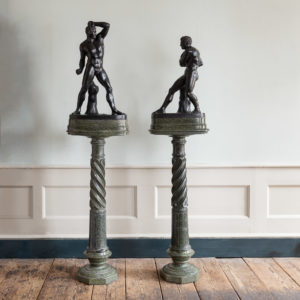
Mid-nineteenth century Italian bronze sculptures of Creugas and Damoxenes
£15,000Mid-nineteenth century Italian bronze sculptures of Creugas and Damoxenes
set atop serpentine columns. Creugante: Height 70.5 cm Width 42 cm Depth 18.5 cm Damosseno: Height 60 cm Width 39 cm Depth 18 cm Plinth: Height 119 cm Width: 44 cm Depth: 23.5 cm£15,000 -
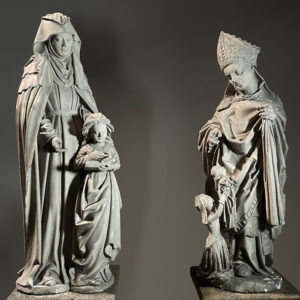
A pair of Victorian plaster statues
£11,000A pair of Victorian plaster statues
one, a group of St Anne teaching the Virgin Mary to read - the standing pair, in robed attire, looking down into the pages of a book, the mother tenderly supporting her young daughter as she reads; the other, the figure of St Augustine with bishop’s mitre and robes - clutching a drape and administering the sacrament to diminutive supplicants£11,000 -
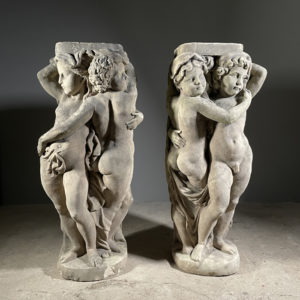
A pair of Victorian carved limestone figural groups
£6,800A pair of Victorian carved limestone figural groups
each stone carved in deep relief with a pair of embracing putti - almost as carytids - flat to the reverse for wall-mounting£6,800 -
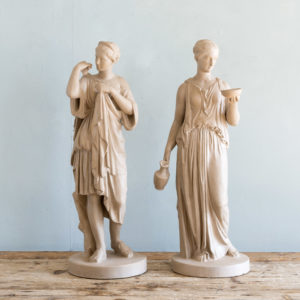
Pair of plaster statues of Hebe and Diana of Gabii,
£1,950 the pair -
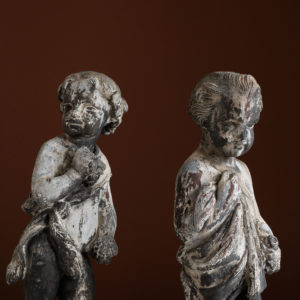
Pair of lead putti Summer and Autumn
£1,150Pair of lead putti Summer and Autumn
the pair of lead allegorical putti figures representing Summer and Autumn, Summer with flowers in its hand, Autumn with grapes. late nineteenth century Autumn is 66.5 cm high, Summer is 65 cm tall£1,150 -
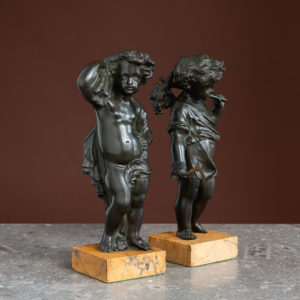
Pair of nineteenth century bronze figures of Harvest and Plenty,
£950 -
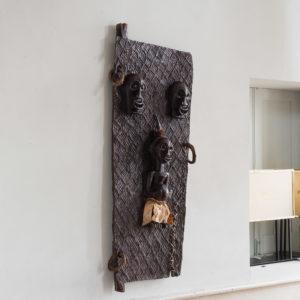
Congolese Songye door
£480 -
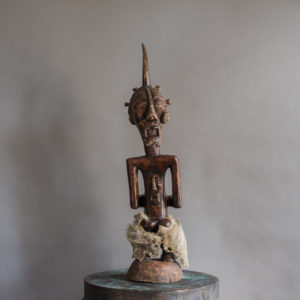
Songye Janus standing power figure,
£325Songye Janus standing power figure,
Congolese double-faced maternal power figure, adorned with animal hide and cowrie shells. The Songye power figure serves to protect its community from evil spirits.£325 -
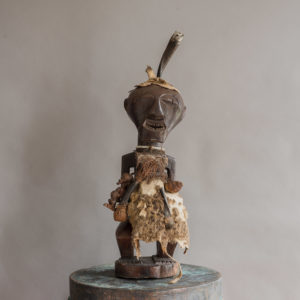
Songye standing male power figure,
£325Songye standing male power figure,
Standing male power figure from the Congolese Songye tribe, beautifully adorned with natural fibres, animal hide, and miniature power figure. These wooden power figures would have served to protect the Songye community from evil spirits and practitioners.£325 -
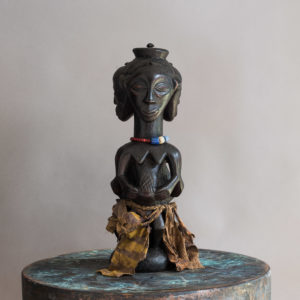
Luba-Hemba triple figural group,
£175Luba-Hemba triple figural group,
Triple maternal power figure with draped cloth fibres and checkered scarification to the belly and head. These wooden power figures would have served to protect the Songye community from evil spirits and practitioners.£175
Featured Items
-
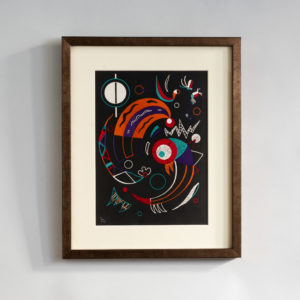
Comets by Wassily Kandinsky, Verve Vol. 1 / No. 2.
£800Comets by Wassily Kandinsky, Verve Vol. 1 / No. 2.
The Verve Review was a purposefully luxurious. It ran from 1937 to 1960, but with only 38 editions available, due to the high degree of design and editorial work dedicated to each issue. Each edition contained unique lithographic prints, commissioned by the editor, and each cover a double-page lithograph elaborated by one of the artists contained within. It was the brainchild of its editor Stratis Eleftheriades, a Greek National who moved to Paris in the early thirties to take part in the growing Modernist movement, writing under the name of Teriade.£800 -
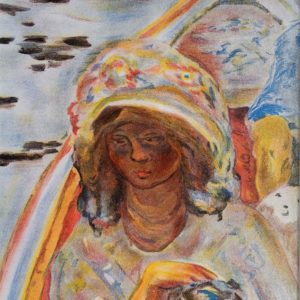
Portrait Fragment by Pierre Bonnard, Verve Vol 2 / No. 5-6.
£600Portrait Fragment by Pierre Bonnard, Verve Vol 2 / No. 5-6.
The Verve Review was a purposefully luxurious. It ran from 1937 to 1960, but with only 38 editions available, due to the high degree of design and editorial work dedicated to each issue. Each edition contained unique lithographic prints, commissioned by the editor, and each cover a double-page lithograph elaborated by one of the artists contained within. It was the brainchild of its editor Stratis Eleftheriades, a Greek National who moved to Paris in the early thirties to take part in the growing Modernist movement, writing under the name of Teriade.£600 -
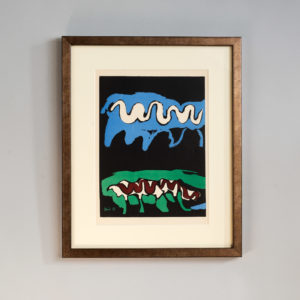
The Four Elements, Earth by Francisco Bores, Verve Vol. 1 / No. 1.
£600The Four Elements, Earth by Francisco Bores, Verve Vol. 1 / No. 1.
The Verve Review was a purposefully luxurious. It ran from 1937 to 1960, but with only 38 editions available, due to the high degree of design and editorial work dedicated to each issue. Each edition contained unique lithographic prints, commissioned by the editor, and each cover a double-page lithograph elaborated by one of the artists contained within. It was the brainchild of its editor Stratis Eleftheriades, a Greek National who moved to Paris in the early thirties to take part in the growing Modernist movement, writing under the name of Teriade.£600 -
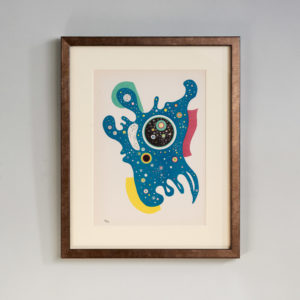
Stars by Wassily Kandinsky, Verve Vol. 1 / No. 2.
£800Stars by Wassily Kandinsky, Verve Vol. 1 / No. 2.
The Verve Review was a purposefully luxurious. It ran from 1937 to 1960, but with only 38 editions available, due to the high degree of design and editorial work dedicated to each issue. Each edition contained unique lithographic prints, commissioned by the editor, and each cover a double-page lithograph elaborated by one of the artists contained within. It was the brainchild of its editor Stratis Eleftheriades, a Greek National who moved to Paris in the early thirties to take part in the growing Modernist movement, writing under the name of Teriade.£800
